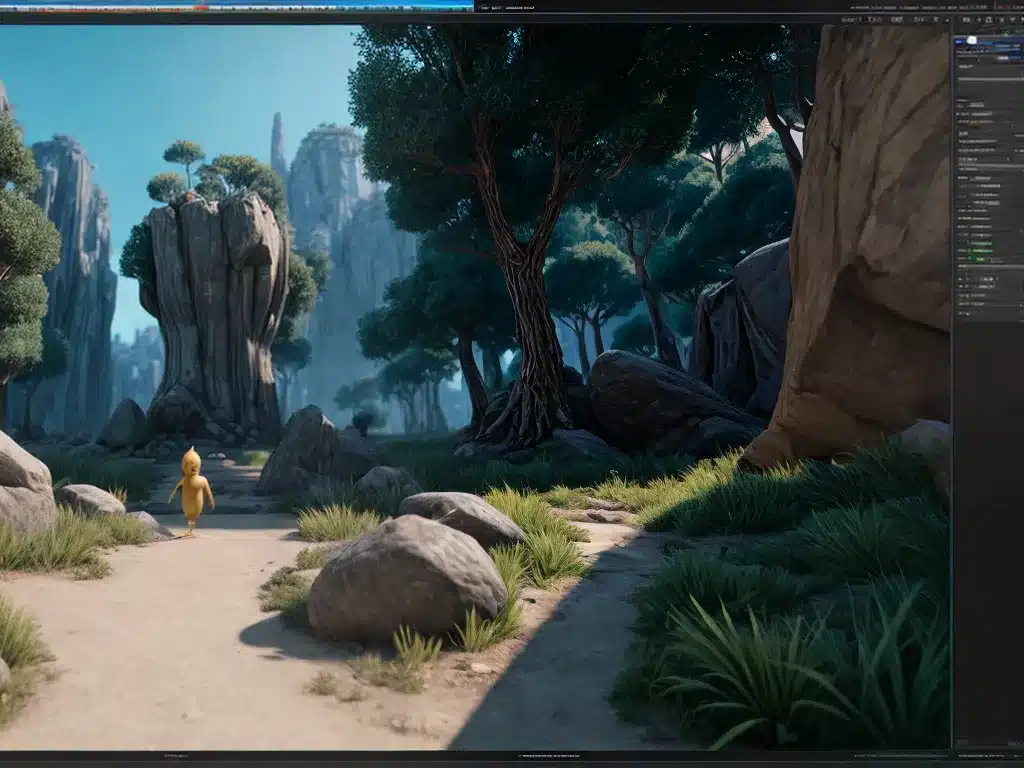Introduction
I am excited to dive into the world of real-time rendering for animated films using Unreal Engine. As an animator and real-time graphics enthusiast, I think this technology holds enormous potential for the future of animation and visual effects. In this article, I will provide an in-depth look at how animated films can leverage Unreal Engine for real-time rendering and interactivity.
Overview of Real-Time Rendering
Real-time rendering refers to the ability to render complex 3D graphics and animations in real-time, meaning the images are generated instantly as the viewer interacts with the content. This is enabled by leveraging the computational power of modern GPUs.
Traditionally, animated films are rendered using offline rendering farms which can take hours or days to fully render each frame. Real-time rendering offers significant advantages:
- Interactivity – Content can be manipulated and explored in real-time for previs, virtual production, and virtual cinematography
- Instant feedback – Changes are viewable instantly rather than waiting for renders
- Cost savings – No time or money spent maintaining expensive render farms
- Flexibility – Shots and scenes can be changed or edited on the fly
This real-time approach represents a paradigm shift for animated filmmaking.
Why Choose Unreal Engine?
Unreal Engine by Epic Games is considered one of the most advanced real-time 3D engines available today. Here’s why it’s well-suited for animated film production:
- Multi-platform capabilities – Projects can be deployed across PC, mobile, VR/AR, console, and web
- Advanced rendering features – Ray tracing, global illumination, and sophisticated materials
- Robust toolset – Animation editing, sequencing, Matinee cinematic tools
- Photorealistic visuals – Capable of high-quality, film-grade assets and visuals
Major studios like Disney have used Unreal Engine for films like The Mandalorian which utilized its virtual production capabilities. Independent animated films can also benefit from its feature set.
Real-Time Rendering Workflow
The workflow for using Unreal Engine is different from traditional offline rendering. Here are the main steps:
1. Asset Creation
- High-poly models, textures, materials are created in DCC tools like Maya, Blender, etc
- Assets optimized and imported into Unreal Engine
2. Look Development
- Materials, lighting, visual effects set up to achieve the desired visual look
- Ray tracing and global illumination enable photorealistic results
3. Animation Setup
- Characters, cameras rigged for animation
- Animation data created in external tools then imported
4. Sequencing
- Shots sequenced together with Matinee cinematic editing tools
- Layout, cameras, timing can be iterated on rapidly
5. Rendering
- Instead of final renders, the engine provides real-time previews
- Final frames can be rendered out for playback or sharing
This methodology allows for much more interactivity compared to offline workflows.
Case Study: Son of Jaguar Short Film
Son of Jaguar is an animated short created entirely in Unreal Engine 4 by students at Think Tank Training Centre. It demonstrates the capabilities of real-time rendering for high-quality animated films.
Some key facts about its production:
- 30+ environment assets created with over 1 million polygons each
- Extensive use of ray tracing for lighting and reflections
- Complex character designs with hair, clothing, and skin shaders
- Cinematic camera animation for emotional storytelling
- Rendered at 2K resolution at over 60 FPS
The 7-minute short can showcase the level of visual quality possible with thoughtful art direction and solid technical execution. For independent animated filmmakers, this opens the door to leveraging real-time tools for their projects without massive rendering costs.
Conclusion
Unreal Engine offers an exciting new production model for animated films – enabling real-time rendering for interactivity and rapid iteration. As the technology continues advancing, we’ll likely see more animated films utilizing these tools for their benefits. For those interested in exploring this emerging methodology, Unreal Engine stands out as a versatile, achievable option. With thoughtful planning and artistic vision, the only limit is your imagination!













